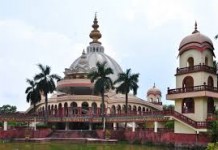Water, Water – And you thought the Corona Crisis was Bad!
I managed an organic farm in Gujarat in 2017, sustainability was a major feature in the project which was to convert from a decades long commercial farm. The farm had a defunct drip irrigation system installed 3 years ago at a cost of Rs23 lac, a state of the art computer driven system installed by Netafim an Israeli company, however what I was horrified to to see was a fire burnt system, ploughed under, pipes cracked, in other words totally destroyed, the government subsidies were not going to kick in again soon for this project.
I looked around and noticed, as one does when one gets into a subject that is relevant to work and I noticed that there were all these drip pipes bundled on many farms, not only in the surrounding areas but beyond. What happened to this marvel of drip irrigation which was proved to be a great success, Israel being one such place where this revolutionized agriculture. Why did it not work here in India, at least in those projects I noticed?
The answer is that there were people who simply took the subsidy and did not bother to install the systems or maintain them because they were so used to flooding the land with water, my project was near the Narmada, A 532 km (331 mi) long canal made to help with farmland irrigation, and in one extreme example a farmer was flooding two plots before his to get to his own inner land, imagine that level of waste!
India has 18% of world population, having 4% of world’s fresh water, out of which 80% is used in agriculture. India receives an average of 4,000 billion cubic meters of precipitation every year. However, only 48% of it is used in India’s surface and groundwater bodies.
Coming back to the question, why not utilize the drip systems, they worked so well in Israel and other places the answer was revealed by the way farmers work, they do not want pipes and other things in the way of ploughing, and if a new manager came and saw overgrown grass, he would simply burn it at least that is what happened to to this system Rs 23 lacs of money up in smoke.
My next question was, now that this is done, and such irrigations systems are not going to help in future, no use crying over wasted water, what can we do to fix this problem permanently?
Fines, penalties and other methods of control won’t work, and all irrigation companies give an extensive explanation of how to use the systems as well as crop advice and other after sales help, still farmers reverted to flood irrigation, the odd thing is that farmers used to get the subsidy over and again but that is a different topic of which aren’t part of the solution, rather just an extension of the problem of inefficient water management.
There are many drives encouraging us to save water at home which are commendable but the reality is that up to 89% is used in agriculture, let me repeat and rephrase that again – up to 89% is used or misused in agriculture!
If you have noticed at least in the cities the water table keeps dropping so that in order to get water that was once available at 10-20feet is harder to find;
Did you know It takes about 1500 litres of water to produce 1 kilogram of wheat, and it takes an astounding 10 times more to produce the same amount of beef. – Nature.com
In Punjab to grow one kilogram of rice, as much as 5,337 litres of water is required more than 260 buckets of 20-litre capacity. The water consumed by rice for the central pool is five times more than the capacity of the Gobind Sagar lake, the reservoir of the Bhakra dam. The reservoir’s gross capacity is 9,621 million cubic meters. Irrigation water for agriculture in Punjab is fed 27% by canals and 73% by tubewells. As agriculture in the state is not much dependent on rain, it is largely fed by underground water, which is extracted with the help of about 12 lakh tubewells. – IndianNewspaper Article
Groundwater has been declining at an alarming rate in India, which is expected to surpass China as the world’s most populous country in less than a decade. More than a third of India’s population lives in water-stressed areas and this number is set to grow due to depleting groundwater and rising urbanisation.25-Sep-2019- Source Reuters
After the Green Revolution in the 1960s got us dependent on groundwater instead of surface water, more than 1,000 blocks have become water stressed, identified the Central Ground Water Board (CGWB) in the the Fifth Minor Irrigation Census.
The groundwater level in India has declined by 61 per cent between 2007 and 2017 and of the extracted water 89 per cent is used for irrigation, according to the census. If this is not scarily alarming for every person in this country, and if you thought the Covid-19 standstill was bad, imagine not having water to grow food or drink? Imagine that those who have children, all the education, technology, home and security we provide for our families all comes to zero.
Now some may say well it rains, and we will get water again, please be very aware that we have turned our soils into lifeless hard clay which is what I was dealing with in the project that I was working on, this type of land heavily fertilized and full of pesticides does not allow anything to penetrate including water, in fact most of the water that falls on the land moves horizontally carry along with it some of the soil as well as the poisons and whatever does go down carries a toxic load.
We need to take this seriously, and again while it is commendable to save water in any way possible the only way is to educate yourself on these topics and try to implement policy change, having said that, what changes need to be defined clearly, I will leave it to your imagination to find a solution before giving a solution that is has always been part of the natural cycle of how everything grows.
The answer lies in history, the way mother nature farms is very efficient, this system has been demonstrated by Lord Krishna and Lord Balaram who demonstrated getting abundance from the in a minimal labor intensive system, a system that was used by many cultures for a long time, it was only recently that we are facing an acute crisis in water supply and soil degradation surprisingly or maybe not so it all began with the “Green Revolution” at a time when resource conservation was not on high on the list of priorities.
In order to define a solution it is necessary to understand some dynamic principles which are actually few in number.
1. Nature is self healing. She adjusts to changes and reacts.
2. Nature is self generating. No one planted forests like the Amazon. (Not to be confused with Amazon.com)
3. Nature has a ground fresh water has a self recharging system, it always had one, but our activities have interfered in that process.
It is important to know that we are heading for an unprecedented crisis and severe reduction in our population, by any and all means, a severe shortage of water will cause wars, disease and a whole lot of suffering! We can see that where there is a shortage of water there is poverty and famine. Nature has a way of adjusting the system and removing problems. Unfortunately, unless we act now, considering this the most important problem we have we will have to face a problem worse than the 2020 world lockdown. There is a popular saying “Hindsight is 2020” and lets think about that, we have all the hindsight and indications of what will happen if we lose our life source – water! All other problems will pale in comparison.
Those who are wise will move to areas where there is food security and sufficient water, those who are the most wise will try to make this problem a major focus and not only think about themselves or just family but will look at the problem from a holistic standpoint, for the prosperity and wellbeing of all life, human, plant and animal. Let us all take this seriously and begin to understand the problem as well as the solution.
We have for centuries grown food, depended on forests and rivers for life, everything was pristine and functioning well, holistically, organically. Have you noticed that organic food is something exclusive these days, yet before the industrialization of agriculture, everything was organic!
We need to go back to the basics, what agriculture does these days is it sterilizes and sanitizes everything, you might notice that the practice of chemically killing off everything in the soil and above all over the planet has resulted in us having to chemically sterilize everything around us for some time to come.
Suggested read: Not only Milk, Cows Give Water – Mayapur Voice
We need to stop thinking that everything needs to be killed, rather by working with nature, which by the way is already managing things on a global scale under the intelligent direction of Lord Krishna.
What we have been doing is effectively stopping that process and thereby fighting nature’s natural regeneration and recycling systems, remember that catchy phrase – Reduce, Reuse Recycle? Well I consider that we just copied natures efficiency in that direction and on the other end of the scale are fighting a battle against her effectiveness and are paying a heavy price in return, the full cost of which is not as yet realized, and I hope we never see that day.
We must not live in a world where we turn a blind eye to facts, if we calculate the cost of food from another perspective using this equation – 1kg of rice is about Rs 100/- and also = 1500 litres of water and price of water at the store =Rs20/- therefore 1kg of rice costs 1500 litres x Rs20/- +Rs100/- which comes to Rs30,100/- (USD$412.00) if we actually had to pay for water. Now for beef the cost goes up ten times to Rs.300,000 per kg. This is just an example to make one understand cost and the need to change things so that we save water, not eat meat and above all never waste food!
It is well known that life forms are dependent on each other, that is the way Lord Krishna created things.
 The problem with over use of water in agriculture is that a dead soil cannot retain water the second problem is that bare land does not retain water, rather it allows for evaporation, anyone can do a practical experiment, I happened to demonstrate this at a farm recently, there was a small patch of land half was covered with wild grass and other vegetation and the other part was bare. What we did was in the early morning around 7am we walked on both the dry and the vegetation, the difference was that there was an abundance of dew on the grass/vegetation as opposed to nothing on the bare land, understand how nature works, she will supply water to all the plants automatically as long as there is sufficient vegetation, the more bare land you have that means more water requirement and more work in getting it there
The problem with over use of water in agriculture is that a dead soil cannot retain water the second problem is that bare land does not retain water, rather it allows for evaporation, anyone can do a practical experiment, I happened to demonstrate this at a farm recently, there was a small patch of land half was covered with wild grass and other vegetation and the other part was bare. What we did was in the early morning around 7am we walked on both the dry and the vegetation, the difference was that there was an abundance of dew on the grass/vegetation as opposed to nothing on the bare land, understand how nature works, she will supply water to all the plants automatically as long as there is sufficient vegetation, the more bare land you have that means more water requirement and more work in getting it there
By increasing the amount of carbon in the soil we automatically increase the water retention, if you increase the water holding capacity then that water slowly filters down to create more groundwater. Therefore when animals, especially cows graze and pass dung on the land it stimulates that process, provided there are no chemical poisons added to the land. The multitude of organisms naturally till the soil making it suitable for cultivation. We should not use anti-fungal poisons which harm this very important part of soil, a study on large fungal networks that extend over miles and transmit food and information, just as we do with road networks and the internet, how this is done buy these mycelium networks as they are known is explained by scientists, such information can be found on BBC or on Google.
The solution lies in returning to nature and working with her, as opposed to working against her, one of the biggest part that is missing is the removal of animals especially cows from the land, today we see cows roaming the streets and eating garbage, and people want to drink this milk but not see to their health and seeing that they have sufficient land to graze.
Why is this important? Because this natural system allows natural water recharging as per diagram above, practical demonstrations have shown when proper holistic planned grazing takes place, the water table rises, in some cases streams start to flow.
This means that nature is smart, she knows what to do and has been doing that for millennia, we have chosen not to follow that path and instead work against it, yet it is a simple change of activity to return to that natural state, without the need for chemical inputs. The current system is one of elimination. Elimination of all perceived or misconceived enemies, and in that growing that circle of enemies so too the growth of elimination, which in turn ends with the elimination of eliminators, thus we see this cycle often has it’s end in suicide, both individual and collective. Should we allow this circle of elimination to grow bigger? We are eliminating water, soil, insects, animals and people, it must be understood that one thing leads to another, something is wrong in the process of management of our resources and that needs change.




































